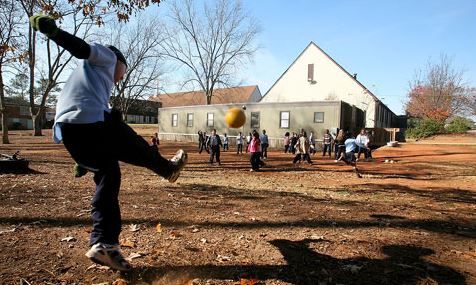
Four times a day, the doors of Eagle Mountain Elementary in Fort Worth, Texas, fling open to let bouncy, bubbly, excited kindergarteners and first-graders pounce onto the playground.The youngest kids at this school now enjoy two 15-minute breaks in the morning and two in the afternoon for a total of one hour of recess a day. That’s three times longer and three more breaks than they used to get. The children always go outside to play games or use the swings and slides, even if it’s drizzly or cold.
“There was a part of me that was very nervous about it,” Donna McBride, a first-grade teacher at the school, told TODAY Parents.
“I was trying to wrap my head around my class going outside four times a day and still being able to teach those children all the things they needed to learn.”
Some five months into the experiment, McBride’s fears have been alleviated. Her students are less fidgety and more focused, she said. They listen more attentively, follow directions and try to solve problems on their own instead of coming to the teacher to fix everything. There are fewer discipline issues.
“We’re seeing really good results,” she noted.
Parents are seeing them, too. Amy Longspaugh noticed her 6-year-old daughter Maribel, who is in McBride’s class, has become more independent and writes with more detail and creativity. Maribel has also made more friends as the kids mingle outside.
“It is what they look forward to every day,” Longspaugh said.
Rethinking recess
Eagle Mountain Elementary is one of four public schools in the Fort Worth area trying out LiiNK, a new program that boosts the amount of recess for the youngest students. The goal: to help children focus and learn better once they’re back in class.
“You start putting 15 minutes of what I call reboot into these kids every so often and… it gives the platform for them to be able to function at their best level,”
said Debbie Rhea, a kinesiology professor at Texas Christian University who created the project.
The American Academy of Pediatrics agrees, calling recess
“a crucial and necessary component of a child’s development.”
Studies show it offers important cognitive, social, emotional, and physical benefits, yet many schools are cutting down on breaks to squeeze in more lessons, which may be counterproductive, it warns.